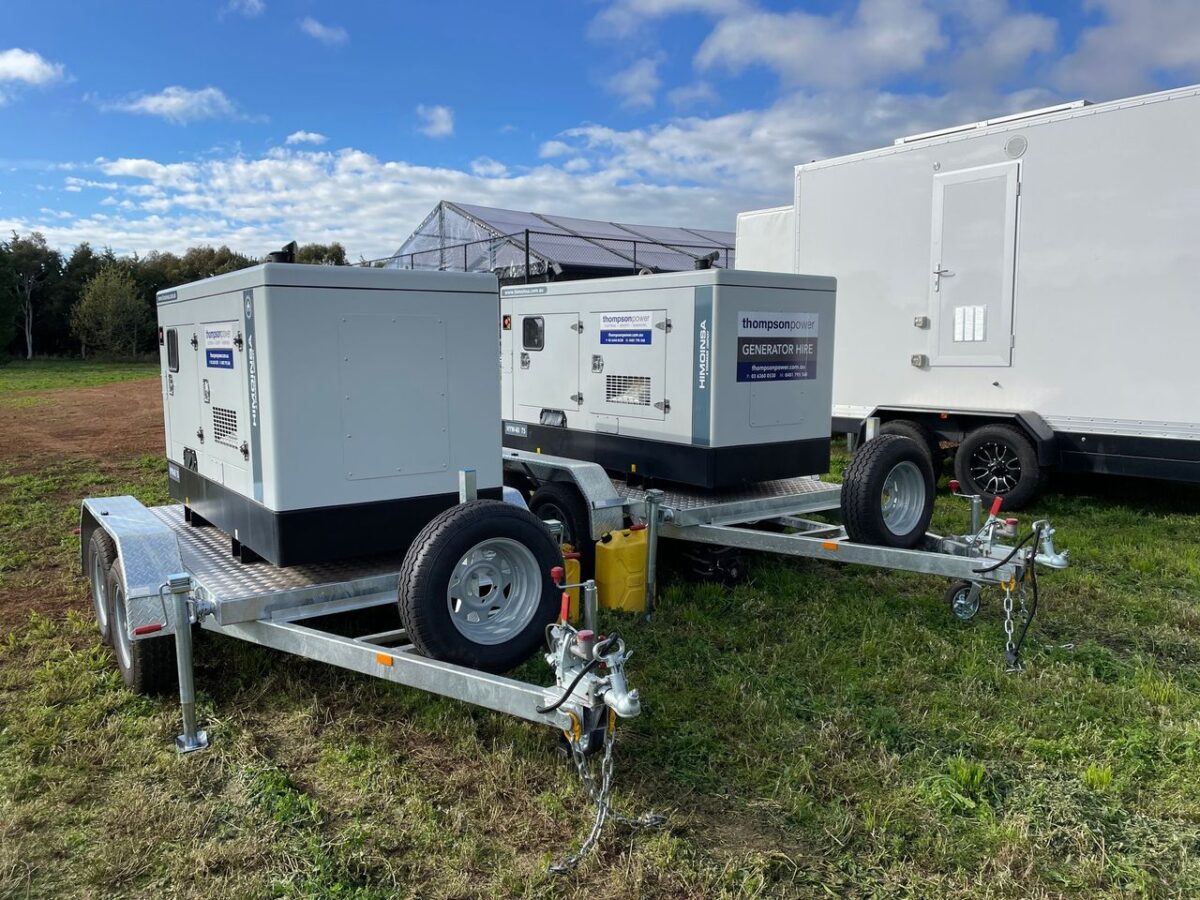Generator Sizing Chart

Generators are an excellent source of power for remote and disconnected sites. Whether they’re used as primary or backup power, a generator ensures you always have the energy you need.
But purchasing or hiring generators can be a serious investment. To make sure you get value for your money, it’s important to select a generator that’s sized correctly for your load.
Generator sizing depends on the equipment you’re operating, duty cycles, applications and a range of other factors. In this article, we’ll provide the generator size requirements for common applications, and factors we consider when specifying generators.
kVA Requirements for Common Industrial Activities
We’ve put together this table showing kVA requirements for some common industrial applications. The kVA column can be used to estimate size of generator you need for your site.
| Industrial Activity | Typical Amperage | Phase Type | kVA Requirement |
| Small Workshop or Worksite (lights, tools) | 40-80 A | Single Phase | 10-20 kVA |
| Medium Office Building (computers, HVAC) | 140-280 A | Three Phase | 50-100 kVA |
| Manufacturing Plant (electric motors, equipment) | 140-280 A | Three Phase | 200-500 kVA |
| Construction Site (cranes, mixers) | 145-435 A | Three Phase | 50-150 kVA |
| Data Centre (servers, cooling) | 290-870 A | Three Phase | 100-300 kVA |
| Hospital (critical equipment, HVAC) | 580-1445 A | Three Phase | 200-500 kVA |
| Agricultural Irrigation (pumps) | 58-145 A | Three Phase | 20-50 kVA |
| Large Retail Store (lighting, AC) | 145-435 A | Three Phase | 50-150 kVA |
Talk to Thompson Power for advice on choosing the correct generator for your application.
How Generator Output is Measured
Generator output is measured in kVA (kilovolt-amperes). kVA is a measure of “apparent power,” which tells us the total amount of power that is being produced by the generator.
This differs from kW (kilowatts), which is a measure of “real power.” kW is the amount of power that is actually being converted into useful energy within a piece of equipment.
We can convert between kVA and kW using the Power Factor, which is a ratio that expresses energy efficiency. Unless otherwise stated, most industrial equipment has a power factor of 0.8. This accounts for energy that’s lost as heat and noise.
How to Choose the Right Size Generator
Generators range in size from 2.2 kVA units up to 500 kVA+. Choosing the correct size of generator can increase uptime, reduce maintenance and help manage your overall expenses. Here are some of the factors you need to consider when sizing a generator:
1. Load Requirements
Total load is the biggest factor in generator sizing. To get this, we tally the maximum starting load required to operate all equipment that’s attached to the generator system.
We base generator sizes on the starting load because this is the maximum amount of power your equipment will demand. This is particularly important if you are operating machinery that uses motors (especially if multiple motors are started at one time).
We also need to consider whether the load requires single-phase or three-phase power. Most industrial generators can provide three-phase and single-phase power.
2. Load Type and Power Factor
The type of load you are operating effects the power factor and total energy requirements:
- Resistive loads – Devices like heaters and lights have a resistive load. These have a standard power factor of 1.0, making them more efficient than inductive loads.
- Inductive loads – Equipment with moving parts has an inductive load. This includes motors and pumps. Inductive loads have a standard power factor of 0.8.
3. Amperage
Generators need to supply sufficient current (measures in amperes) to power an electrical load. Amperage can be calculated using the following formulas:
- Single-phase power – Amps = 1000 × kW / (Power Factor × Volts)
- Three-phase power – Amps = 1000 × kW / (√3 × Power Factor × Volts)
The same as when we’re measuring the total power draw, we need to know the starting amp load to choose the correct size of generator.
4. Future Expansion
Worksites are rarely static. If you’re expecting to add new equipment or grow the business, you’ll need more power in future.
The best way to manage this situation is to choose a generator that’s larger than you need. This will save you from having to purchase a new generator when it’s time to upgrade your equipment.
If you are hiring a generator long-term, you’ll have better flexibility to upgrade your equipment without the upfront cost of purchasing a larger generator.
5. Duty Cycle
How you use the generator has an impact on its performance and maintenance. Size requirements vary based on whether the generator is used for continuous, prime or standby power.
For example, a generator that’s used for standby power typically isn’t required to operate every piece of equipment onsite. In most cases, standby generators are used to power critical machinery, so power requirements are lower.
On the other hand, continuous operation puts additional strain on a generator, and we recommend choosing a larger size than your actual load requirements. Sizing up your generator ensures it’s running efficiently. This reduces maintenance and improves uptime.
Get the Right Size Generator With Thompson Power!
Hiring a generator is the best way to get the power you need. When you work with Thompson Power, we supply industrial-grade generators that are sized for your requirements, and we’ll manage any maintenance.
Thompson Power is a specialist electrician that works across Central Western NSW. We offer three-phase generator hire to clients in mining, agriculture, manufacturing, events and beyond.
Our fleet of mobile generators includes equipment from Himoinsa, Cummins and Kubota. These machines are high quality and suitable for long-term installation as prime or standby generators.
Contact us for a quote on generator hire and we’ll help you choose the best size for your application!
